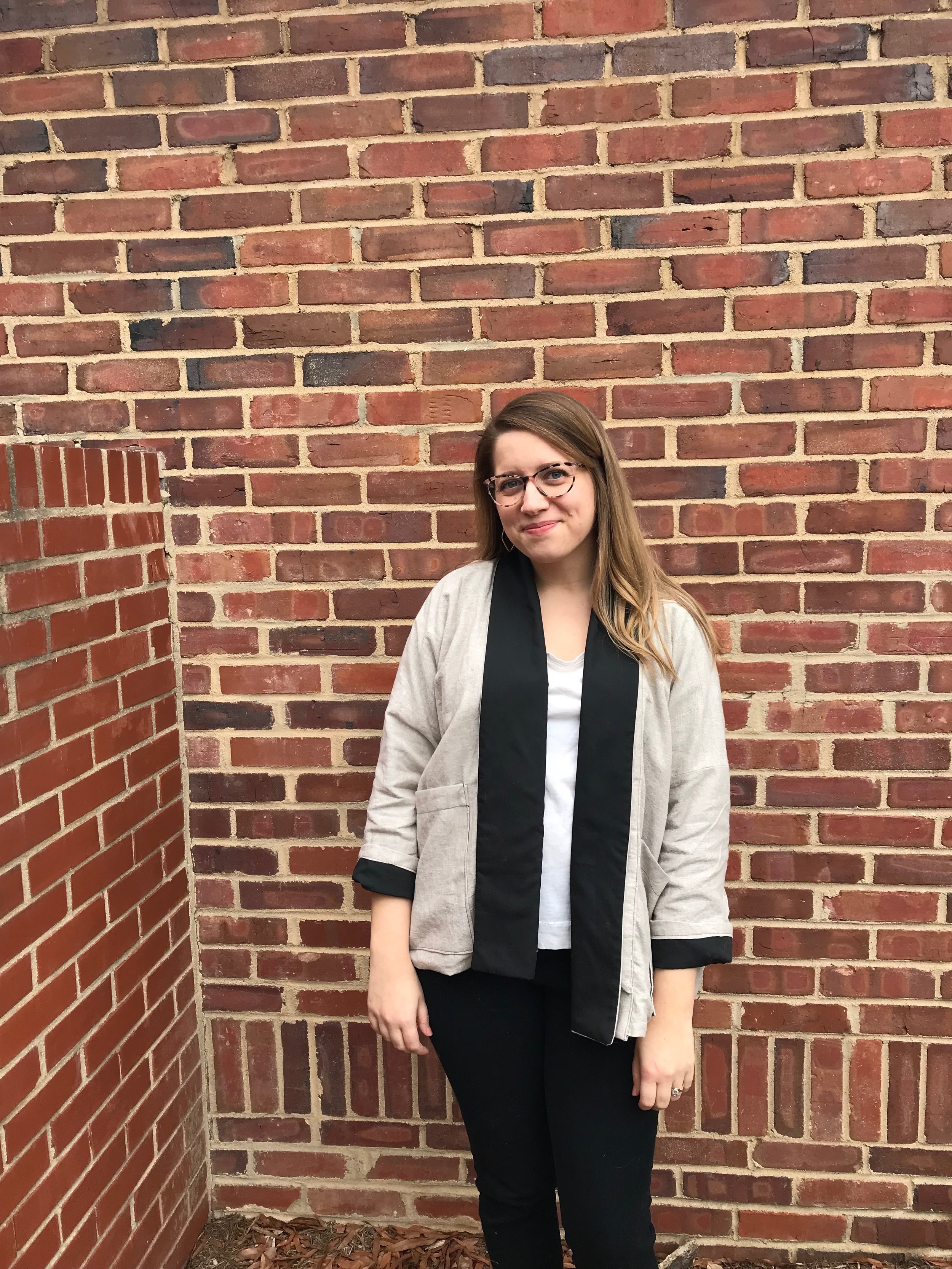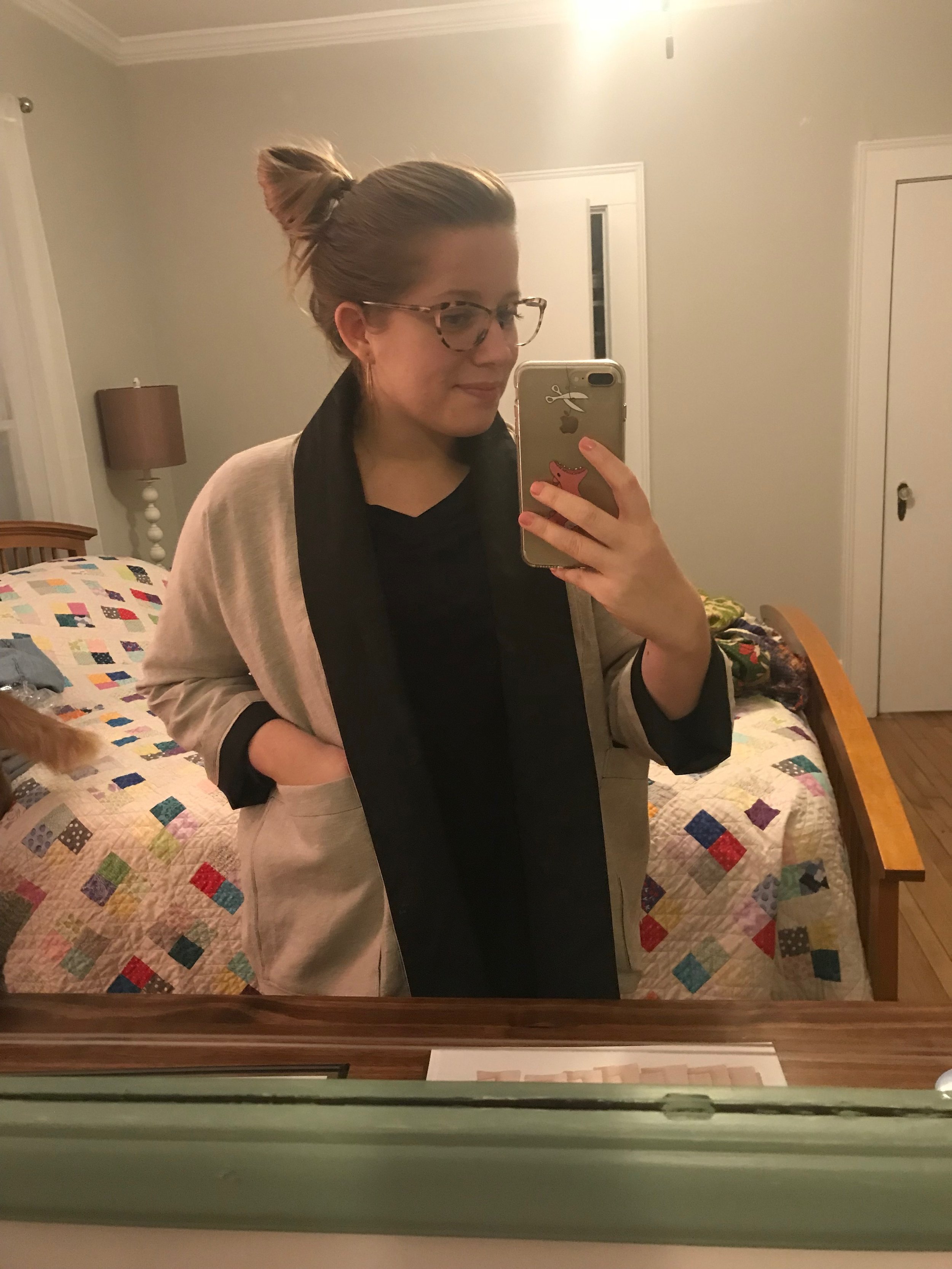Should you follow along in my knitting and sewing adventures on the blog with some regularlity, you’ll remember that sewing up a Hinterland dress by the talented Meg has been on my list of to-makes for, well, about 18 months. I purchased the fabric and pattern something like last February and there they both stayed for the longest time. Once again a small fear ballooned in my brain until the idea of actually putting scissors to paper and needle to thread seemed too too much against the dreaded unknown of buttonholes and sewing buttons on a garment. I toyed with the idea of a pattern modification to omit the buttonholes, but they really are a key feature of the pattern and really make it the special thing that it is. I thought, “Snaps could be a good substitute!” But resisted the urge to consume more craft supplies in light of the only reason for my consumerism would in fact be the fear of using something I had. I sewed dress after dress and jacket and knitted sweater, took on knit fabrics and gathers and in-set pockets but firmly avoided buttons. (I am very good at procrastinating when I set my mind to it.)
As with 99.99999% of things for which I have an irrational avoidance, one day I woke up and decided that Enough is Enough and I am sewing these buttonholes today. I reasoned with myself, “Just do one step at a time!” and before I knew it, I had sewn my first placket, gathered a little sleeve, and this dress was looking distinctly ready for buttonholes. And then, I just went for it (after a practice or four on some scrap fabric). Turns out, sewing machines are very good at sewing buttonholes and it was over in about five minutes. And wouldn’t you have guessed, I love these little buttons, slightly crooked though they may be, and am very invested in sewing at least two more of this dress, buttons and all.
The fabric is a linen/cotton blend I purchased at a big box fabric store. I did, as is likely obvious, the short version of the Hinterland with sleeves and a half-placket. The only modifications I made for this first version were to omit the bust darts, which I generally dislike, and to include the optional waist ties in the back. With my favorite season quickly approaching and the stash-diving already begun, I’ll next put together a kind of colorblocked version with longer sleeves and a little more length, I think. This pattern is very straightforward for a beginner and I would highly recommend it to those who are in search of a delightful and easy dress to wear at home in these hot final days of summer.








 That "I'm just so excited I just finished this thing late at night" feeling
That "I'm just so excited I just finished this thing late at night" feeling